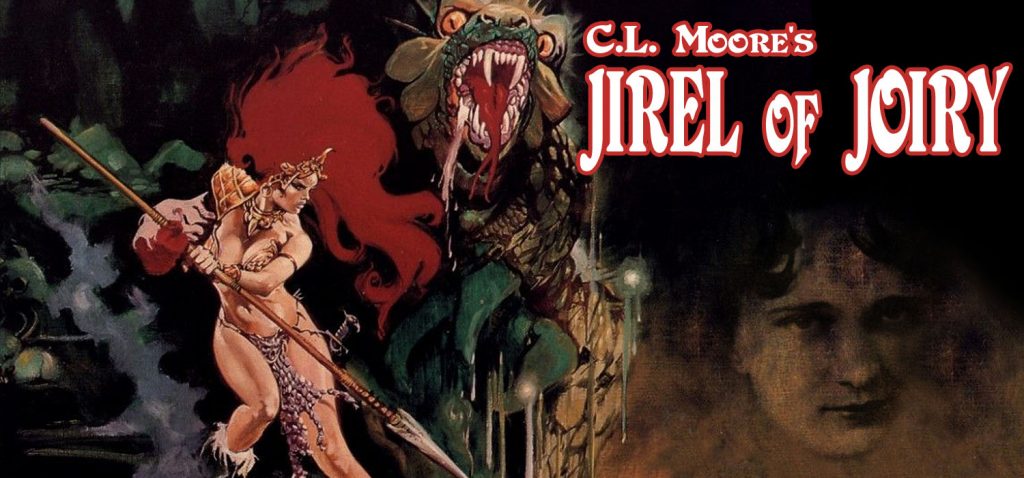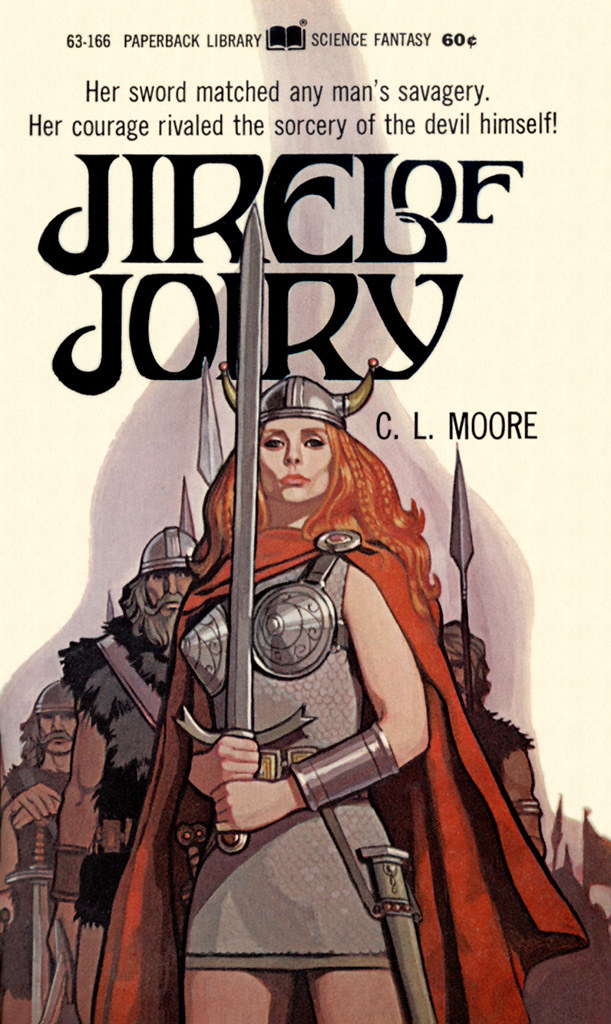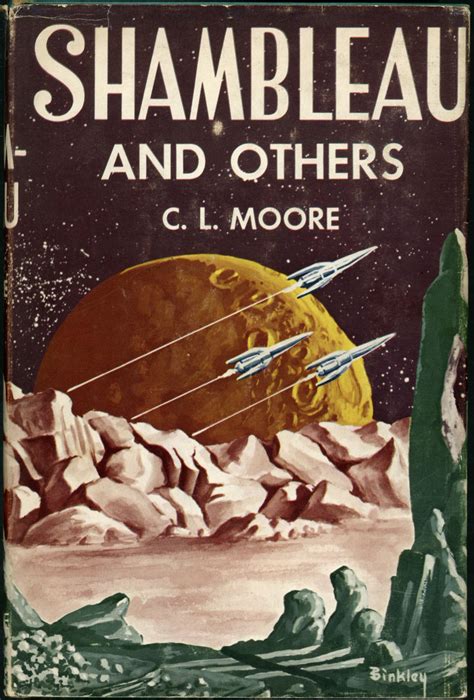Jirel of Joiry: First Heroine of Sword-and-Sorcery
by Ryan Harvey
The sword-swinging, laser gun-blasting, wooden-stake carrying women who are an enormous part of today’s popular entertainment owe their existence to a medieval lady who first appeared more than eighty years ago in the pulp pages: Jirel of Joiry. Flame-haired, tenacious as a she-lion, “a shouting battle-machine,” sojourner in forbidden magical lands—Jirel was the first woman of the sword to do battle against sorcery.
Jirel did not come on to the fantasy scene quietly. She slashed out of the table of contents of Weird Tales with a formidable willpower that still places her in the top ranks of fantasy heroines. She only appeared in six novelettes between 1934 and 1939, but she and her creator C. L. Moore became permanent stars of speculative fiction—the two women who ripped down the “Men Only” sign from the fantasy door.
The Lady of Joiry would never have had such a lasting impact if it weren’t for Catherine Lucille Moore’s immense writing talent, which was evident from her first published story. “I was reared on a diet of Greek mythology, Oz books and Edgar Rice Burroughs, so you can see I never had a chance,” she remembered of her childhood. At age twenty-two, while working at a bank in Indianapolis, she made her first writing sale with the oddly titled dark science-fiction piece “Shambleau.” Editor Farnsworth Wright at Weird Tales recognized a brilliant new author and published the story in the November 1933 issue. “Shambleau” introduced Northwest Smith, Moore’s influential galaxy-wandering rogue. The evocative atmosphere, emotional power, and gripping prose stood out among planetary SF of the time; it was a breathtaking performance that launched Moore to the front of the Weird Tales bullpen.
Jirel arrived less than a year later in “Black God’s Kiss,” still one of the best stories to appear in Weird Tales. Five more adventures followed: “Black God’s Shadow,” “Jirel Meets Magic,” “The Dark Land,” “Hellsgarde,” and “Quest of the Starstone.” The last she co-wrote with her future husband, Henry Kuttner, and it brought together Jirel and Northwest Smith in their only meeting.
Although a sword-and-sorcery heroine, Jirel isn’t merely a gender-swapped Conan or Amazonian cliché. She’s a woman of complex contradictions: iron heroism combined with emotional receptivity. Unrelenting in battle and filled with rage that often sparks in her yellow eyes (“the yellow blaze of her eyes held fury as a crucible holds fire”), Jirel is also driven by dark passions and pathos. She’s modern in her defiance of masculine conventions of the Middle Ages—a woman landowner and respected war leader—but is also brazenly medieval, possessed of aristocratic haughtiness and an admirer of the art of torture. She allows no man to force himself on her (this is the engine behind the first story, “Black God’s Kiss”), but admits an enjoyment of casual romance and sex—as much as could be admitted in the ‘30s pulps: “She remembered laughter and singing and gayety … she remembered kisses in the dark, and the hard grip of men’s arms about her body.”
“Black God’s Kiss,” the most anthologized of the Jirel stories, still evokes complex reactions from readers. It set the template for most of the stories: Jirel, seeking a tool against a foe, enters into a eldritch realm. Lands of the weird were Moore’s specialty, and this was where Jirel often found herself. Although armed with her favorite two-handed sword and dagger, the Lady of Joiry rarely uses them against the creatures of these otherworlds. Her willpower, her mental resources of pain and tempestuous love are her principal weapons against opponents such as the inhuman sorceress Jarisme (“Jirel Meets Magic”) and the inhabitants of the dark land of the warlock Pav of Romne (“The Dark Land”).
In “Black God’s Kiss,” Jirel searches a surreal realm to find magic to avenge herself against the man who has conquered Joiry and humiliated her by forcing a kiss on her. After passing through many dark marvels, and even shedding tears for the denizens in torment, Jirel makes a pact with the Black God for revenge—only to discover a hidden and painful truth about her desires.
The best story after “Black God’s Kiss” is “Jirel Meets Magic,” which pits the heroine against a fay sorceress. Jarisme is an ideal opposite to Jirel: cold and icy, as inhuman as Jirel is full of humanity. Jarisme puts the heroine through ingenious magical challenges and tortures, but Jirel’s arsenal of hatred for the supernatural and the pains of her past loves allow her to overcome her enemy: “… boiling into one great unbearable explosion of violence in which rage took precedence over all. Rage at life for permitting such pain to be. Rage at Jarisme for forcing her into memory. Such rage that everything shook before it, and melted and ran together in a heat of rebellion …”
The last Jirel story Moore wrote solo, “Hellsgarde,” is the only one where Jirel remains in her own world the entire time. But the cursed castle of the title is still a superb setting for Moore’s peculiar word-craft. It’s the most action-oriented story, although Jirel feels a bit more outside events with less chance to move the narrative.
After C. L. Moore and Henry Kuttner married, they primarily wrote science-fiction in collaboration (often under the pseudonym Lewis Padgett). Moore never returned to Jirel. After Kuttner’s death in 1958, she did little writing aside from some television work and teaching courses at USC. She retired from writing entirely after her second marriage in 1963. She died from Alzheimer’s in 1987 after a long period in a coma. Jirel of Joiry, however, stalks the lands of the weird with sword and dagger still, leading the army of fantasy heroines who have followed her.










